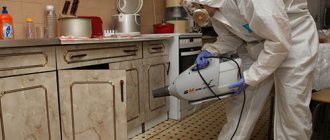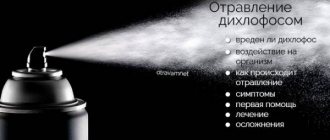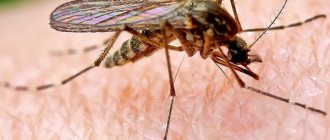What is hot fog?
A hot fog machine is a device that is used to eliminate bed bugs and pest problems in your home or outdoor space. There are several types of thermal foggers: gas, fuel and electric.
They all use heat to evaporate a fogging solution, creating a dense cloud of fog that penetrates even hard-to-reach places: into cracks inside the house and into shrubs, grass, and treetops outdoors.
How does an aerosol hot fog generator work?
A hot fog machine, as the name suggests, uses heat energy to vaporize an insecticidal solution and sprays it through a nozzle as a mist. The insecticide or other fogging liquid is poured into the container. On average, the solution reservoir is slightly more than a liter. There is a pump inside the container that is used to pump the solution from the container through a thermal unit located on the front of the generator. The trigger mechanism for most foggers is located under the handle of the tool.
For propane foggers, there is a propane tank socket at the rear of the generator.
The electric generator is connected to an outlet using a cord.
When the fogging solution is pumped into the heating unit, it passes through a coil that is heated to a very high temperature and the insecticide is vaporized and sprayed through a nozzle at the end of the generator as a thick mist.
Particle size ranges from 0.5 to 5 microns. They will remain in the air for a long period of time until they settle on the ground. Tiny particles can get into hard-to-reach places, both indoors and outdoors.
Where is hot fog used?
The hot fogging system is the preferred method for outdoor use. Because generators operate at high temperatures, they are not considered safe for indoor use, especially if there are flammable materials around the home.
In addition, if the heating is insufficient, the insecticide may begin to drip from the generator. Stains on the surface are difficult to clean.
The effectiveness of killing bedbugs with hot fog
An effective option for getting rid of bloodsuckers in Moscow apartments when the territory is heavily infested is considered
disinfestation of bedbugs with hot fog. In a special container, when heated, the drugs are broken down into a finely dispersed substance with a particle size of no more than 30 microns. The cooled hot mist from bedbugs slowly settles on the furniture, penetrates the pores of the wallpaper, and the thickness of the upholstered furniture.
The destruction of bedbugs in Moscow with hot fog and in the Moscow region is rational if the pest population is large and the degree of bedbug infestation is high in all rooms. The cost of such a procedure is slightly higher than using a dispersed cloud, but cleaning the room from bedbugs is guaranteed even in the most extreme situations.
“Hot” treatment of bedbugs is a fast, effective and most modern option for insect control that does not cause damage to property. Experts will quickly remove the bloodsuckers and discover nests with embryos in secluded places. The resulting cloud penetrates into cracks inaccessible to a standard spray and impregnates significant surfaces.
Comparison of cold and hot fog
Below we will introduce you to the differences in the operating principles of cold and hot fog generators, so that you can make an informed choice if you decide to use this method of pest control.
Benefits of cold fog
Drink less fluid. As the name suggests, ultra-small generators use small amounts of fogging liquid, which reduces costs as the fogging solution is atomized under air pressure into very small particles.
This leads to the following benefits:
- Cheaper to use, since there is no need to purchase additional holders that need to be replenished or replaced, depending on the frequency of use of the insecticidal equipment.
- Cold mists are more environmentally friendly and do not create greasy residue that is difficult to clean.
- In most cases, cold mists have virtually no odor and are much more pleasant to use, especially indoors.
Can be used with water and oil based solutions. Most cold fog generators allow the use of both water-based and oil-based solutions. Water-based compositions are much more environmentally friendly and non-flammable.
- No road risks. Cold fog creates an almost invisible cloud of fog, so there is no danger to traffic and can be used in cities and other crowded places.
- Easier to work. The generator is easier to operate than its thermal counterparts, especially when compared with professional equipment. Liquid poison can simply be poured into a tank, the fogger connected to electricity and left on, while hot fog generators require a number of additional manipulations, including heating the assembly for a certain time and releasing the fog manually by pulling the trigger.
- They don't make any noise. As a rule, they operate quieter than thermal ones, which is important in city conditions.
Disadvantages of Cold Fog
- Almost invisible fog. Fog is practically invisible, so it is much more difficult to control its direction outdoors. Even with a slight breeze, the mist will move away from the desired area you want to treat. In addition, people will not see the cloud of fog, so they will not be able to avoid it and may inhale toxic substances.
- Difficult maintenance and repair. A generator may be easier to use, but it is difficult to maintain and repair because it consists of an electric motor, air pressure pumps, and complex injectors. Such equipment should only be repaired by a specialist.
- Larger droplet size. Cold foggers produce larger particles than thermal foggers (10-50 microns in diameter). Although they can be adjusted for different applications, they cannot produce as fine, high-density particles as their thermal counterpart. Indoors and outdoors, this means that fog cannot penetrate into the smallest and most difficult to reach areas.
- Higher purchase cost. Cold fog machines for personal use typically cost twice as much.
- Need more time for fog. It takes comparatively longer time for fog to form.
Is it possible to use cold fog when treating yourself?
It is better to call professionals to treat your apartment with cold fog. To carry out such processing, a special generator is required, which is also called a fogger. The term comes from the English word "fog", translated meaning fog. The prices for such a device are quite high, so buying it for one-time use is impractical. A fogger should only be purchased by a specialist who is constantly engaged in baiting insects and whose device pays for itself fairly quickly.
Typical cold fog generator for sanitary disinsection.
As for the cost of services, treating a room with cold fog will cost almost the same as spraying an apartment yourself with a spray bottle, but the efficiency of professional work is much higher. To accurately get rid of insects, it is better to contact reliable and trusted companies.
The apartment must be prepared for treatment with cold fog in the same way as is done before disinsection by other methods. It is necessary to remove all objects from open surfaces, move furniture away from the walls, dismantle sofas and beds. It is important to find as many bedbug hiding places as possible. Cold fog kills bedbugs faster and more reliably than other technologies due to its high penetrating power. However, you should not expect that it will magically get rid of parasites in an unprepared apartment.
When the room is being processed, only specialists should be present in it. If the owners decide to stay, they must wear respirators. After the disinfestation is completed, the apartment must be left closed for at least 3 hours. Then it should be well ventilated. You can return home and lead a normal life on the same day. The drug used to bait insects ceases to be dangerous to people and pets after it settles on surfaces.
There is not a single case known where the products used would cause harm to residents or their pets if all safety rules were followed.
How does hot fog affect bedbugs?
The survival rate of bedbugs is largely determined by the type and properties of the poison used.
There are several categories of insecticides based on their mechanism of action. If you used Yurax or Averfors as a contact poison, then it poisons the body, gradually penetrating through the chitinous covers of arthropods. There are also intestinal and contact intestinal poisons.
What solution is used to treat bedbugs?
Any disinfectant or liquid insecticide designed to kill bed bugs is suitable for fog generators. There is a large selection of different aerosols on the market, ranging from classic dusts to the latest products.
Bed bugs very quickly develop immunity to insecticides, so we recommend that you entrust the selection of the correct insect poison to professionals. As an option, you can consider products under the Medilis brand, as well as liquid pest control agents Chlorpirimark, Sichlor, Tetracin, Yurax, Paragraph, Acaritox, Alfatrin, Taran, Executioner, Tetrix, Tsifoks, Klopomor, Fufanon, Karbofos and other products from proven certified companies, such such as Dezsnab-Trade LLC, Alina Nova Prof LLC, Eslana Dez LLC, etc.
How long do bedbugs live after fogging?
Ectoparasites are very tenacious. The results of disinfestation do not always appear immediately. There are times when repeated sanitation is required, because bedbugs can easily settle in unobvious or very hard-to-reach places and happily survive the moment of persecution there. After all, even if you remove 99.9% of a tenacious insect, it will eventually restore the population again. Moreover, the new generation will be stronger than the previous one with excellent immunity to the previously used pesticide. With each repeated sanitation, it becomes more and more difficult to get rid of them.
Damage from hot fog
The drug, together with the fog, penetrates into all the cracks and can easily end up in a neighboring apartment and cause irreparable damage, for example, if a person with allergies lives there. This is especially true for “hot fog”, which has enormous penetrating power.
Ventilating an apartment does not always help after treating it with “cold” or “hot” fogs. The poison can remain dissolved in the air for up to three days. Many companies do not work with fog generators in apartments, but only in separate buildings, because they believe that there is a high risk of poisoning people, because microparticles of the active substance remain in the air for a long time.
In other cases, professionals use solutions in fog generators that belong to hazard class 4 and will not harm people, pets and indoor plants.
Personnel working with fog generators may become ill. Prolonged exposure to fog can lead to painful upper respiratory symptoms and loss of voice.
Even in a person who is not prone to allergies, short-term exposure to poisons sprayed by fog generators can be associated with headaches, dizziness, drowsiness and eye irritation.
Preparatory activities
Preparatory activities must be carried out in several stages and all the recommendations below must be carefully followed.
General rules:
- Please read the instructions first.
- Avoid contamination of food or pet food.
- Proceed with treatment only when the room is cleared of people and pets.
- It is necessary to ventilate the room 30 minutes before re-treatment.
- For best results, treat all affected areas.
- Use one misting system for every 60 cubic meters.
- Use additional devices for remote areas or where achieving free flow of fog is not guaranteed.
Safety precautions
- Do not use more than one fogger per room.
- Do not use in small enclosed spaces such as closets or closets.
- Do not use one and a half by one and a half meters or less in a room; instead, allow fog to enter the area from other rooms.
- Turn off all ignition sources, such as pilot lights (turn off gas valves), open flames, or running electrical appliances that turn on and off (such as refrigerators, thermostats, etc.).
Actions before starting processing
- Remove food, dishes, kitchen appliances, and cover exposed surfaces.
- Close exterior doors and windows.
- Remove pets and birds but leave pet bedding as this can be a breeding ground for bedbugs and should be treated for best results. There is no need to throw away bedding after treatment. You need to cover, or better yet, take out the aquariums and bowls.
- Leave rugs, draperies and upholstered furniture in place. This processing method will not harm them.
- Cover waxed wood floors and waxed furniture in the immediate vicinity of the fogger with cloth or newspaper.
- To improve efficiency, open all cabinet doors and drawers to allow better mist penetration.
- Remove all contaminated food and dispose of it in an outdoor trash container (not the garbage disposal).
- To control bedbugs, thoroughly vacuum all carpeted and upholstered furniture, along baseboards, under furniture and in closets.
- Place the dust container in a plastic bag and dispose of it outdoors.
- Clean all hard floor surfaces.
How to use a fog generator
Read all directions and warnings before use.
To start the fogging process:
- Shake the generator well before use. Hold it at arm's length with the top of the disinfectant container facing away from your face and eyes. Press the button until it locks into place. This will start the fogging process.
- Place the canister upright on a table, stand, etc. and cover it with cardboard or a thick layer of newspaper to prevent staining on the surface. To treat an entire room, multiple aerosol generators will be needed in homes with more than one level and numerous rooms.
- Leave the room as soon as the process begins. Do not re-enter for two hours: After two hours, open all exterior doors and windows and turn on air conditioners and fans. Ventilate for at least 30 minutes before returning indoors.
If additional devices are used for remote areas or if free flow of mist is not ensured, increase the ventilation time accordingly.
Storing the Fog Generator
- Do not contaminate water, food or feed during storage or disposal.
- Pesticides should be stored in a cool, dry place.
Always store pesticides in their original containers. They should be kept away from food and animal feed.
- Removing pesticides and handling containers: Do not puncture or burn! Use a disposable container. Do not reuse or replenish it. If container is empty: Dispose of in trash. If it is partially full, you should contact your local solid waste disposal agency. Disposal must be in accordance with the disposal instructions.
Hot fog treatment for bedbugs
When using fog machines, you must place the equipment in the appropriate location, start it up, and leave the room (maybe even leave the building if the label says so).
Not all foggers are designed for use against bed bugs, so you will need to read the label before purchasing the equipment.
If you plan to use a fog machine:
- Before purchasing, check the instructions to ensure that you are purchasing a product that is registered for use against bed bugs.
- Read the label before using the product to make sure you are using it correctly.
- Only use foggers that are suitable for your space. More is not better, and too much can lead to an explosion.
- Turn off power to reduce the possibility of an explosion.
- Leave the room or building as directed on the label and do not return until the time indicated on the label has expired.
What to do after disinfestation?
When pest control is over, carry out wet cleaning; hard-to-reach places or the back walls of furniture should not be ignored either. As practice shows, independent extermination of insects using this method often aggravates the situation.
Not all insecticides work on insects. It is not always possible to completely get rid of insects in one procedure, even with the use of the latest drugs.
Advantages and disadvantages
In the fight against bed bugs, there is no universal ideal remedy that guarantees 100% elimination of parasites and does not cause much inconvenience. Each remedy has its own flip side of the coin.
Advantages of hot fog
- Dense and dense fog. One of the main benefits of hot fog is the appearance of the fog itself. Because these generators use heat to evaporate the fogging solution, it produces a cloud of thick, white to gray fog. While using cold fogging methods, an almost invisible fog is created. There are several benefits of highly visible fog from thermal fogs such as:
- Easy to adjust and control the mist flow. This is useful for misting outdoors in windy conditions if you are fighting garden bugs. In many cases, it is necessary to control the fog and direct it to specific areas, such as plant foliage, treetops, and other areas. Because this type of mist produced by hot fog machines is highly visible, it is very easy to target specific areas.
- This is psychologically more convincing to clients. A thick white cloud of fog is much more effective in demonstrating that the problem is actually being addressed, whereas using a cold fog that is virtually invisible can cause people to begin to doubt the effectiveness of the sanitation treatment.
- It is easier for the professional operating the generator, as well as other people, to avoid direct contact with the mist, which may contain substances harmful to health.
- Efficiency. Heat foggers are more effective than cold foggers for several reasons. They use a lower concentration of active ingredient, can spray more insecticides using less energy, and require comparatively less time to fog.
- Hot fog generators are cheaper. If we consider prices, they are usually more than half as much.
Disadvantages of hot fog
- You will spend more gasoline. Perhaps the biggest disadvantage of hot fog generators is that they are very expensive. The high cost of gasoline used in thermal foggers will become quite noticeable if you need to fog large areas. This can make bed bug removal more expensive.
- Sprayed insecticides may have strong odors that are unpleasant to the generator operator and others in the vicinity.
- Sprayed poisons can leave oil stains that are difficult to clean, which will become a new problem for you after the area has been treated.
- Fire risks. Because hot fog generators operate at very high temperatures, the mechanism becomes very hot during operation, which can lead to fires. This is why some hot fog generators are prohibited from being used indoors.
- Deafening noise. The powerful, professional hot fog machine produces a loud noise when operating, which may limit its use in apartment buildings. However, cold fog machines can also be quite loud depending on the size and power of the motor.
- Size of spray droplets. Although fine droplets have significant advantages over larger particles, when it comes to controlling garden bugs in windy weather it can reduce effectiveness.
Why is this method more effective than others?
Hot fog has the following advantages:
- High processing speed. The procedure takes no more than 30-50 minutes, depending on the size of the room.
- Penetration into hard-to-reach places. A huge advantage of this method, since it makes it possible to destroy bedbugs in any hidden places: behind cabinets, cabinets, inside sockets, under window sills, sofas, baseboards, in various crevices in the house, etc. The aerosol quickly spreads in space and penetrates deeply into the structure of any materials, which is difficult if, for example, cold fog is used.
- Destruction of bedbug eggs, which is possible due to the maximum penetrating ability of the chemical suspension. Hot fog treatment allows you to completely get rid of insect offspring and minimize the risk of re-infestation.
A distinctive feature of hot fog is that this treatment has a prolonged effect. Due to the minimal particle sizes, the insecticide suspension can remain in the air for a long time - for 8 hours. Then it gradually settles on the surface, which generally ensures the effectiveness of the treatment and allows you to exterminate any insects. In particular, bedbugs will be destroyed within 5 hours.
Adults are the most susceptible to thermal and chemical effects, so during hot fog treatment they are eliminated first. The insecticidal aerosol penetrates the body of pests through the chitinous integument and respiratory system. Bedbug larvae and eggs die a few hours after the first contact with the toxic substance.











